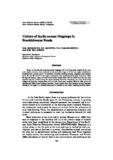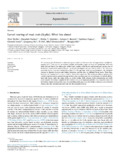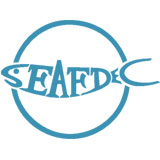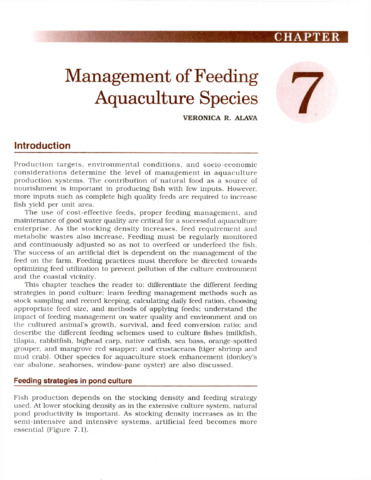Culture of Scylla serrata megalops in brackishwater ponds
Share
abstrak
Three- to five-day old hatchery-reared megalops (4.0 to 6.4 mg body weight) of the mud crab, Scylla serrata, were cultured to the juvenile stage in 20 m2 net cages installed in brackishwater nursery ponds. To establish a suitable stocking density, megalops were stocked at 10, 20, and 30 ind·m-2 in net cages. Treatments were replicated three times over time. After 30 days of culture, mean survival of juveniles ranged from 48.3 to 53.3% and did not vary significantly (P > 0.05) among the three stocking densities. Similarly, the mean final body weights of juveniles ranging from 2.91 to 3.40 g and mass weights 458.9 to 1066 g did not significantly differ among stocking densities. These results show that stocking of crab megalops directly in net cages in a brackishwater pond is feasible at any of the stocking densities tested.
Suggested Citation
Rodriguez, E. M., Quinitio, E. T., Parado-Estepa, F. D., & Millamena, O. M. (2001). Culture of Scylla serrata megalops in brackishwater ponds. Asian Fisheries Science , 14(2), 185-189. http://hdl.handle.net/10862/1912
Subjek
Taxonomic term
Koleksi
- AQD Journal Articles [1215]
Related items
Showing items related by title, author, creator and subject.
-
Larval rearing of mud crab (Scylla): What lies ahead
Waiho, Khor; Fazhan, Hanafiah; Quinitio, Emilia T.; Baylon, Juliana C.; Fujaya, Yushinta; Azmie, Ghazali; Wu, Qingyang; Shi, Xi; Ikhwanuddin, Mhd; Ma, Hongyu (Elsevier, 2018)The increasing global demand for mud crabs (genus Scylla) and threats to the wild populations highlight the urgency of fully rearing them in captivity. Despite considerable progress in mud crab production, most crab farms ... -
Mud crab pond and pen culture
Rodriguez, Eduard M. (University of the Philippines Aquaculture Society, Inc, 2001) -
Management of feeding aquaculture species
Alava, Veronica R. (Aquaculture Department, Southeast Asian Fisheries Development Center, 2002)This chapter teaches the reader to: differentiate the different feeding strategies in pond culture; learn feeding management methods such as stock sampling and record keeping, calculating daily feed ration, choosing ...






